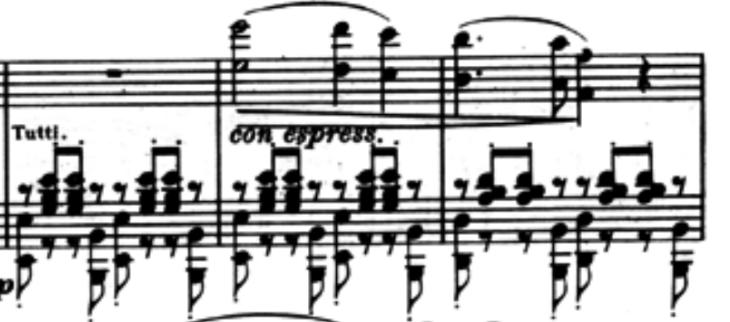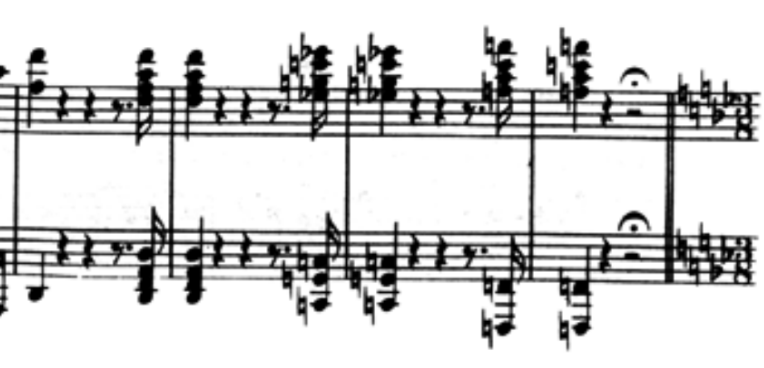Opera Club #1.3 - La Traviata, Prelude and Opening
Jan 6, 2016 · peterb · 6 minute readCulture
If you’re just joining us, start at the first article in this series.
The Music
One special note here before we begin. The first act of La Traviata has an absolutely astounding velocity, in both dramatic and musical terms. I’m not prepared to call it unique, but it’s certainly unusual in its incredible density of memorable music. You’re going to be exposed to tons of strong emotion and at (at least) three lyrical, hummable, embed-in-your-head tunes in a mere 30 minutes. By cutting up the analysis the way I’m doing here, I’m intrinsically doing the work a disservice, and it will hurt the first act of La Traviata more than it might hurt other works. So while I don’t think it’s necessary to watch the whole 2 hour opera at once, you might want to watch the first act in one sitting, and then come back for the analysis sometime later. In the Netrebko/Willy Decker staging linked to in part I of this series, the first act ends at 32:15.
NUMBER #1 - PRELUDIO
Let’s talk about the prelude, or overture, to La Traviata. You can watch it in the video I linked to in the first post, or you can use these YouTube links which are prelude-only. For purposes of this post, I’m going to use time markers from the “BBC Proms” version because it will free us from the distraction of watching Anna Netrebko be scared of a big clock. And once again - and this is the last time I’ll say this - I have no musical training and I’m totally ignorant and you should consider anything you read here to be nothing more than the ramblings of an amateur.
BBC Proms, conducted by Xian Zhang:
So that you can hear an alternate, here’s the Berlin Philharmoniker / Herbert Karajan version - more stately, a bit too slowly-paced for my taste, but very emotional:
We start with enigmatic, wandering strings, full of sadness - this is Violetta illness and her inevitable death: the first notes you hear in the opera are basically foreshadowing the end. We are lost in this (beautiful, but disturbing) musical fog for about a minute, and then at around 1:20 (again, BBC Proms video timing) we settle in to this odd cadence: a dance-like “oom-PAH-PAH-pah” rhythm in the bass, and then a descending, lyrical line in the strings:

That descending line with the dotted rhythm represents Violetta’s love, and Violetta’s loss. You’ll hear it again 2 acts from now, in the linchpin scene of the opera, and you’ll also hear it going through your head all day if you listen to the Prelude and nothing else, because it sticks in your mind like that.
The love theme continues for another bar (it has more than that initial descending line) over the oom-pah-pahs, until suddenly it stumbles (at around 1:58), and everything grinds to an uncomfortable halt. Even the oom-pahs stop. What we get instead is the cellos, playing a triplet and then a quarter note, twice, sounding almost like a lawnmower trying to start. To me (from now on, assume that anything I say is preceded by an invisible “to me”) this is Violetta’s illness - it sounds almost like coughing, and interrupts everything else with its foreshadowing.

The lawnmower revs a couple of times and then the music gracefully recovers its feet and the love theme resumes (2:17), only now there is this odd, mannered little addition in the violins: triplets (2:21), with a rest between them, rising, and then tripping downwards like a brook (2:25). It’s vapid, polite, nice-girl music. This is Violetta’s public face - it smiles, it’s graceful, and it’s utterly lacking in depth.

Don’t believe me? At 2:48, the love theme drops away for a few seconds, and it’s almost as if Verdi is taunting us - the music loses all interest. It’s a party we don’t actually want to be at. At 2:55 the love theme comes back, and then we spend the rest of the prelude flitting back and forth between these three states - love theme only, public face only, and both at the same time. The prelude glides to a stop soon thereafter, and the stage is set for the story.
Number 2 - Dell’invito trascorsa
As with the prelude, you can watch the Netrebko version (properly, the “Willy Decker staging”), but I’m going to use a different interpretation for discussion of this number. The reason I keep avoiding the Netrebko version for the analysis is largely practical - it’s really convenient to have a YouTube snippet that has only the song that we’re listening to, and those are the timestamps i’ll be using. But if you’d like to use the Netrebko version, that’s fine! This song starts at 5:36 and goes to 10:12. Or, you can just watch this video for this number alone:
This is largely a connective number, so I’m not going to go terribly deep here - there’s not a lot of deep going on.
With a flourish, the music takes off like a shot - like a bullet from a gun, and it will maintain this pace for almost the entire act. The whole orchestra, in a rising flourish! A pregnant pause! Another happy flourish!

The music here is party music! Dance music! People are dancing, gambling, drinking, having a good time! Everything is light and bouncy - this music would not feel at all out of place in the circus. Check out this bass line:

That rhythm is going to be everywhere; it’s the rhythm of Paris, the rhythm of the city, the rhythm of goings-on. bom-BOM-bom-BOM-bom-BOM-bom-BOM [repeat for a long time]. That’s the rhythm of people for whom life is very light. If you keep your ear open through the opera, sometimes it will be in the foreground, as it in in this scene, but will appear where you don’t necessarily expect it - someone will open a door, and you’ll hear that in the distance.
This is an opera about a normal (well, ok, rich-normal) woman who has feelings that are at odds with her public persona. The music is going to signal us as those conflicts play out.
Violetta Valery, famous courtesan, arrives, and immediately announces her intention to LIVE FOR PLEASURE! (1:00). We’re introduced to Alfredo (1:30), who seems like a nice Jewish Provençal boy. There’s a little action, still over the light music, which reduces to “Go talk to her, you dummy” / “Nah, I can’t.”
Around 3:00, we learn that Alfredo has a crush on Violetta, but she laughs it off. At 3:50 we can hear the music speed up, grow to a crescendo, and we’re setting up to get into the (extremely famous) drinking song, “Brindisi”. Alfredo is ready to demur, but Violetta says it would please her, so he’s willing to give it a shot. Everyone in the crowd says they’ll listen attentively. Let’s ask the orchestra if this going to be a big deal. “Hey, orchestra - is this going be a big deal?” EVERY INSTRUMENT IN THE ORCHESTRA AGREES THAT THIS IS GOING TO BE A BIG DEAL (4:45).
